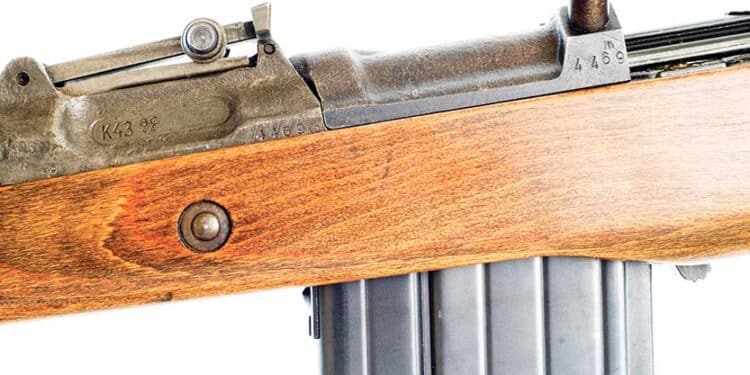Story & Photography by Alton P. Chiu
During WWII, the Gewehr 43 (G43) was the German answer to American M1 Garands and Soviet SVT-40s. Along with parts and accessories, the rifle is highly collectible today. SARCO Inc. (Steen Armament Research Company) offers functional reproduction magazines for replacement or to save wear and tear on originals. The company, located in Easton, Pennsylvania, is one of the largest dealers in surplus war materiel in the U.S. The business collaborates with military arms collectors, shooters and military history re-enactors. This article compares a reproduction to an original “gcb” magazine. SARCO’s magazine’s dimensions closely match, and it functions without problems on an AC44 rifle. The markings are close but different enough for collectors to distinguish. However, the magazine catch area has thin metal in one area.
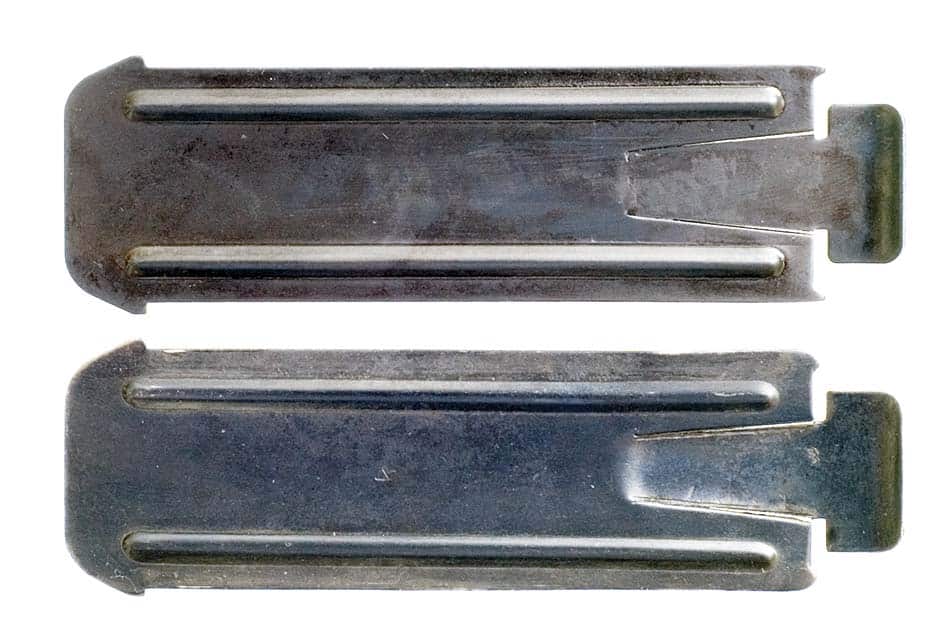
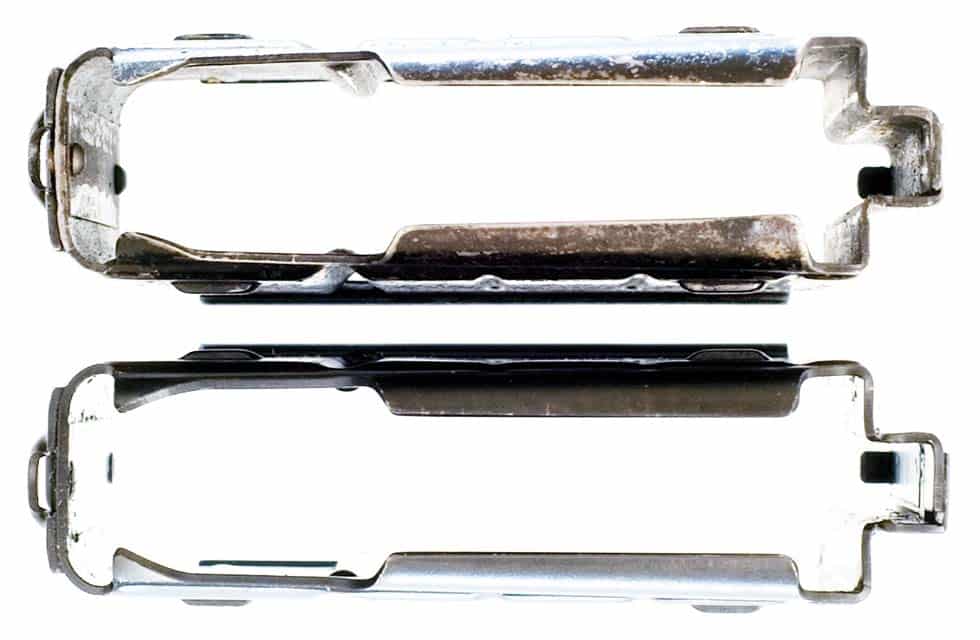
Physical Construction
The magazine body is dimensionally similar to the original. Despite sharper corners, one can still easily insert and eject the magazine. While feed lips are shifted slightly forward, they fed ammunition without pause.
Externally at the front, the two rivets are solid on the original, while hollow on the reproduction. At the bottom and sides, floorplate lips and over-insertion stops are similar to the original. At the rear, magazine catch differs notably. Two sides of the sheet metal body are folded together to form the spline. This is also where the catch is formed. The reproduction has a notch cut into the inside piece of sheet metal, and the outside piece is seemingly stamped to form the “V” shape. Consequently, there is precious little metal at the apex while magazine internals are exposed to the outside. The original does not feature this opening, and the author could not verify metal thickness at its apex. The SARCO representative reassured that the company has never had issues regarding this construction and has no history of returns.
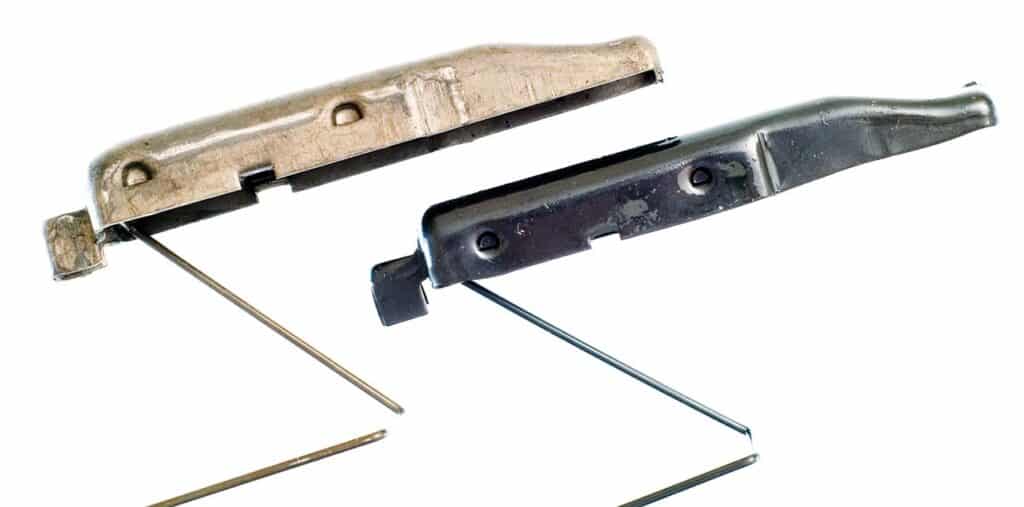
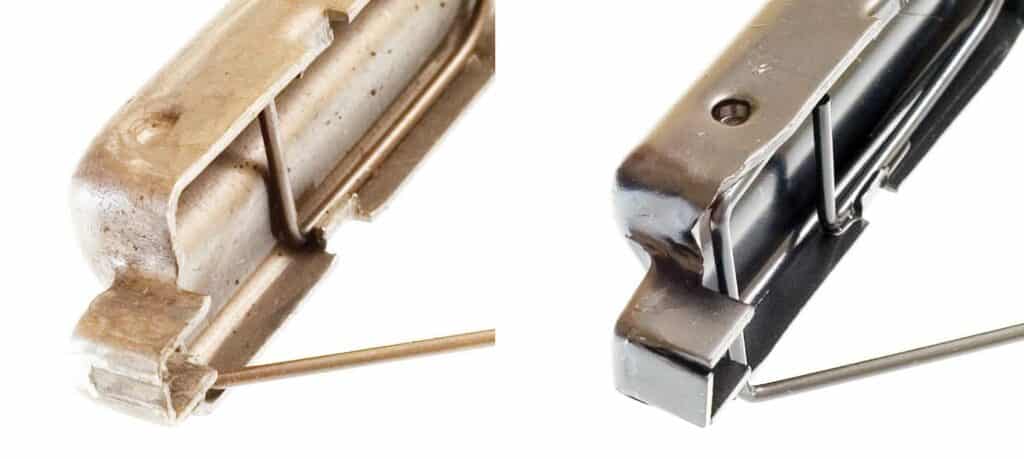
Internally, the follower is of the same stamped metal construction as the original. While the stamped bits used to hold the magazine spring is shallower and smaller on the reproduction, there was no functional issue. At the follower tail, the original is fully welded and smooth whereas one can see the splits on the reproduction. Recoil spring is of similar gauge and length, with the same number of wind-ings. The reproduction floor plate is the two-ribbed type, with cuts in the same place, and is interchangeable with the original.
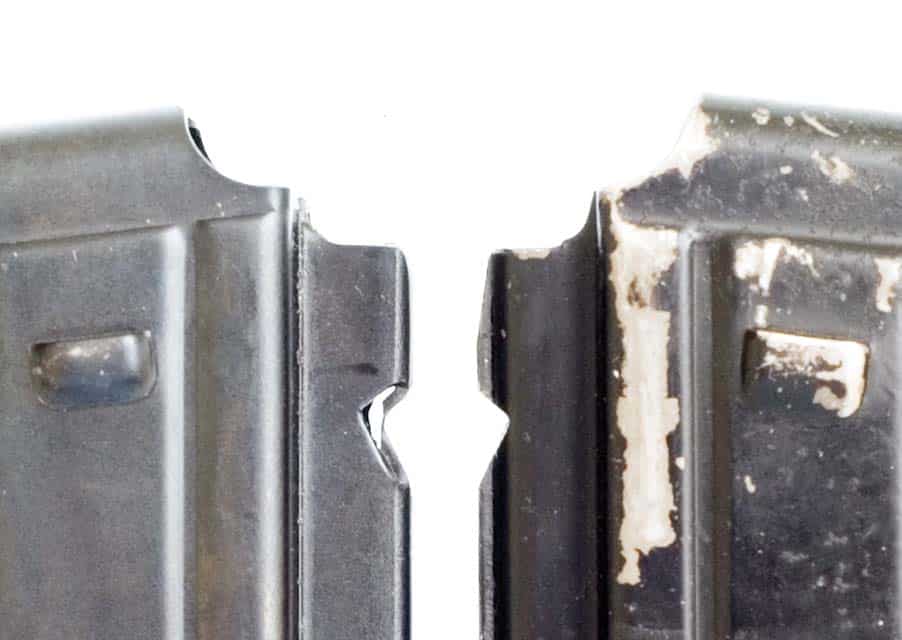
Markings
The reproduction’s markings are mostly correct but are different enough to allay fears of contaminating genuine pieces. The markings are shallower and lack tell-tale signs of stamping usually observed in originals.
The manufacturer code “gcb” denotes Ad. “Grohmann & Sohn in Würbenthal Sudetenland” is mirrored across both magazines in the same place. However, the original is marked only “K43” while reproduction is marked “G43/K43” in the same place. The original magazine also featured both “WaA892” Waffenamt on the bottom in line with the other markings, while the reproduction magazine placed one just under the front over-insertion stop. Lastly, the original Waffenamt has the alpha-numeric arranged in a slight curve under the Nazi eagle while the reproduction has them straight.
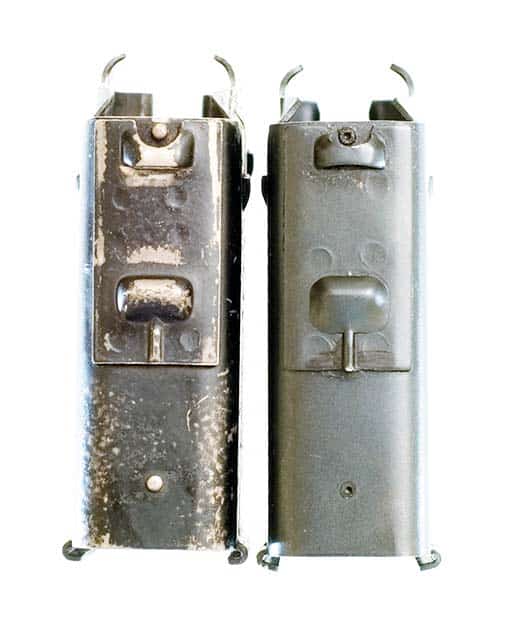

Function and Conclusion
SARCO’s reproduction magazine functions without hic-cups in the test rifle, a Walther 1944 manufacture (AC44). It locks into place with no undue wobble and removes cleanly with the magazine release depressed. Using Yugo-slav surplus 198-grain ammunition, it feeds reliably from the first to the last round. These reproductions represent viable, functional replacements while marked closely enough for passing inspection—the clear differences prevent pollution.
FOR MORE INFORMATION
SARCO Inc. e-sarcoinc.com
| This article first appeared in Small Arms Review V23N8 (Oct 2019) |



